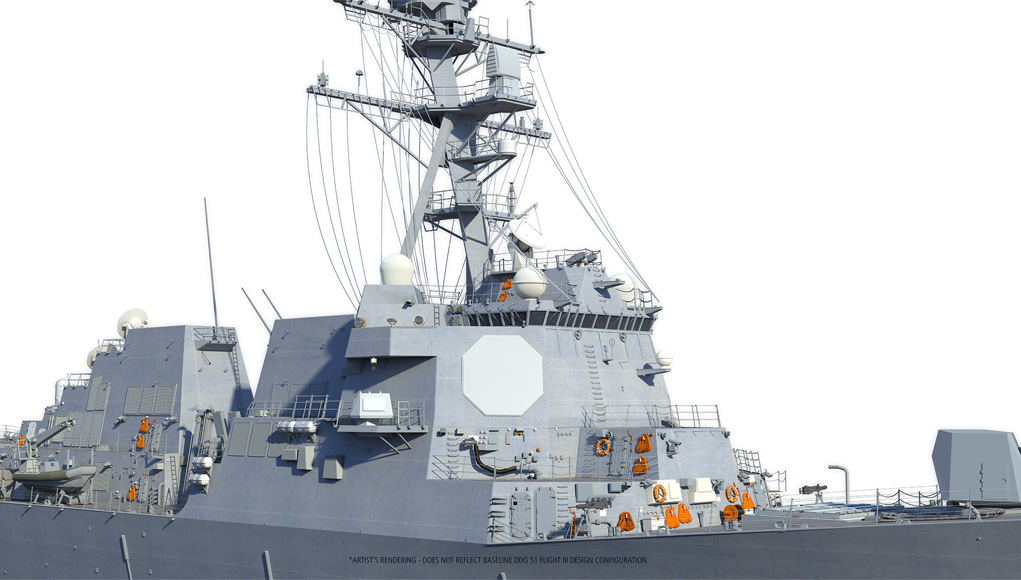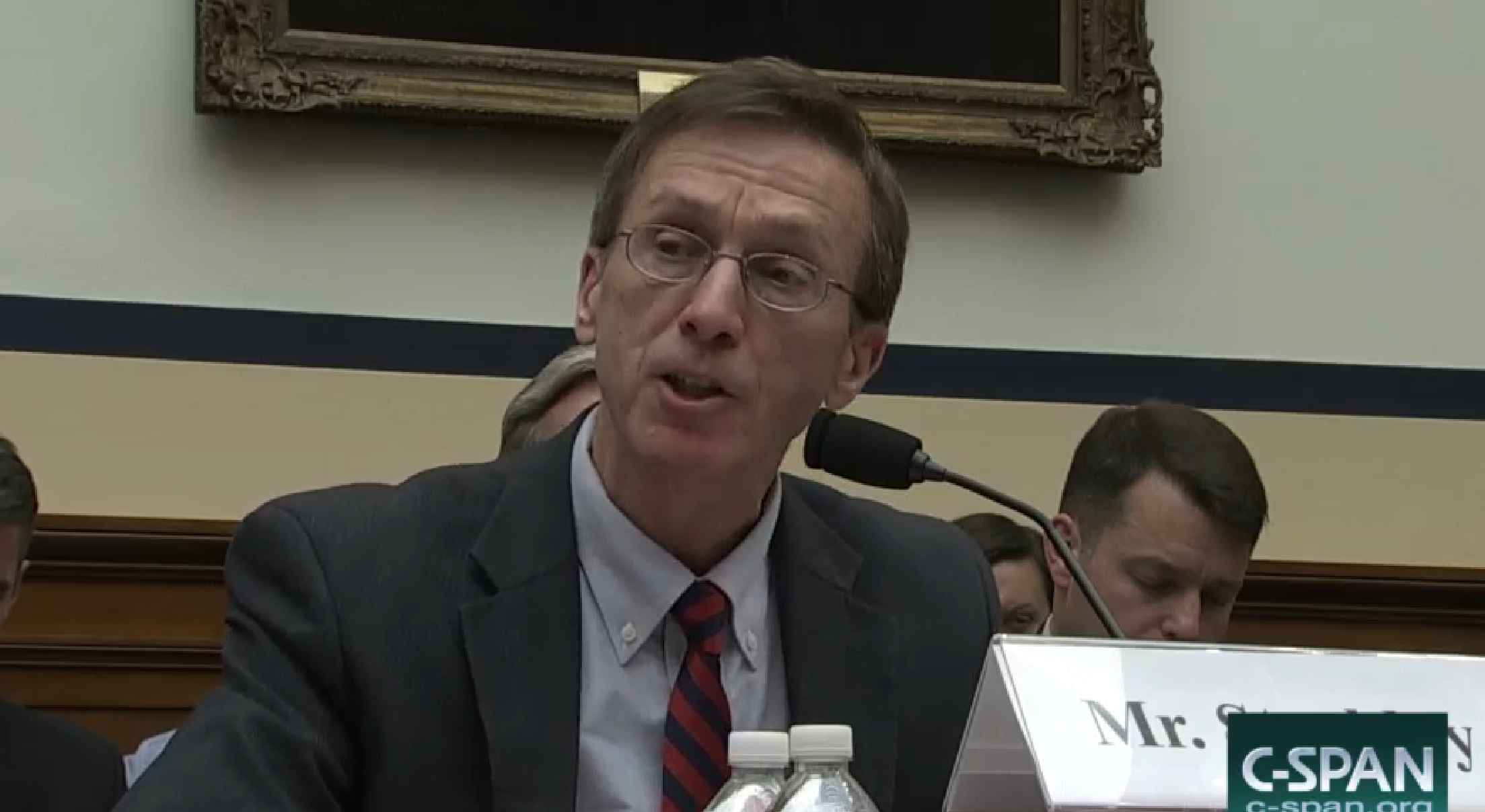
WASHINGTON, D.C. — The Navy’s chief acquisition officer said despite recent shifts in its destroyer acquisition outlook – the service’s program to put a next generation radar on a Flight III Arleigh Burke guided missile destroyer (DDG-51) hull is on track.
Last week’s Naval Sea Systems Command (NAVSEA) contract announcement — in which the Navy awarded two Flight IIA hulls — fomented confusion in Congress and other parts of the Navy who assumed one of the hulls contracted in Fiscal Year 2016 would be set to be built as a more complex Flight III with the new Raytheon SPY-6 Air Missile Defense Radar (AMDR).
“The plan has always been two destroyers a year, we introduce Flight III in the last ship of 2016 as an ECP – an engineering change proposal,” Sean Stackley, assistant secretary of the Navy for research, development and acquisition told USNI News following a Wednesday hearing before the Senate armed services seapower committee.
The engineering change proposal is guide for the modifications to the base Burke hull to upgrade the ship’s power, cooling and electrical system to install the active electronically scanned array (AESA) SPY-6 radar – which will be 30 times more powerful than the current SPY-1D radar on the current Burkes.
However which 2016 destroyer will be the Flight III is still unclear. Late last year – during the deliberations for the Fiscal Year 2016 budget – Congress included $1 billion in the Navy’s budget for a third Burke in ’16 and permission to fund the ships incrementally.
However, $1 billion isn’t enough to build a Burke destroyer and the Navy included an extra $433 million in its FY 2017 unfunded priority list to cover the difference.
“So today, we’re basically describing to Congress – we need another $433 million to finish the [third] ship,” Stackley said.
“Now we’re waiting to get this additional FY ‘16 ship in hand in a timely manner to award the ECP for this [third] ship. If we can’t get this ship in a timely manner then we’ll have to modify one the two that are already under contract.”
Regardless, Stackley said the decision on which hull will be the first to field the SPY-6, testing and development for the AMDR will not be effected by the change.
“We are still pressing forward the ship design and the integration associated with the introduction of the AMDR radar so that all remains on track,” he said.
The following is a partial transcript of Sean Stackley speaking to reporters on April 6, 2016.

USNI News: Can you clarify where Flight III fits into your plan with a potential third destroyer to be bought with FY 2016 money?
Stackley: The plan has always been two destroyers a year, we introduce Flight III in the last ship of 2016 as an ECP – an engineering change proposal.
The multi-year is all Flight IIAs. And so in 2016 we’re going to award it two Flight IIAs – which we did. The pricing expiration date was 31 March and we exercised on 30 March. We are working the Flight III ECP and that will be the last ship in 2016.
USNI News: So that will be the third ship?
Stackley: So let’s talk about the last ship in 2016. A year ago the last ship was going to be one of the two ships that we just awarded. Congress added a billion dollars in incremental funding [for a third ship]. We included – as you described – the $433 million of the balance of money required to fully fund that ship in the [unfunded priorities list].
Our 2017 budget was built about the same time Congress was passing the 2016 budget – so there’s no mention of an additional ship in our 2017 budget and we’re only now building the 2018 budget. So today, we’re basically describing to Congress – we need another $433 million to finish the ship, there’s risk associated with the [FY 2018 budget plan] – with all of the reasons that we described for all of the competing pressures in the budget and so we’re identifying the shortfall to fully fund the ship in the UPL.
That said, it’s our intent to get that ship – it’s absolutely our intent to get that ship — in which case that would be the third ship in ’16, we would make that [third ship] the Flight III ship.
If for whatever reason we don’t get that get that ship in ’16 – we’re going to take that Flight III ECP and modify one of the two ships we just awarded.
USNI News: To clarify one point, $1.433 billion is Flight IIA money; it’s not Flight III money.
Stackley: [Yes], that’s Flight IIA [money] but we have the balance of funding already in our hands.
So we’re budgeted for two Flight IIAs plus one Flight III mod. We awarded two Flight IIAs and we still have the balance of funding for the Flight III mod. And now we’re waiting to get this additional FY 16 ship in hand in a timely manner to award the ECP for this [third] ship. IF we can’t get this ship in a timely manner then we’ll have to modify one the two that are already under contract.
USNI News: So there won’t be any delays to AMDR deployment or testing?
Stackley: AMDR is marching forward just like I described in the hearing. We are still pressing forward the ship design and the integration associated with the introduction of the AMDR radar so that all remains on track.





